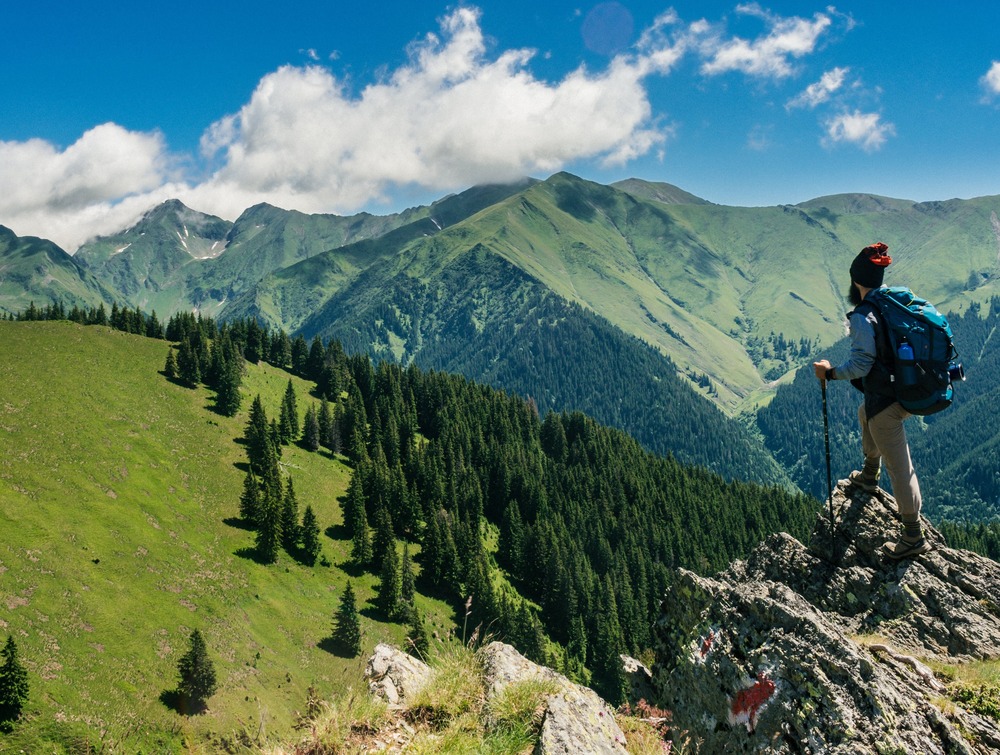Explore a comprehensive guide for solo female travellers, addressing safety, pre-travel preparations, navigating new destinations, and building a supportive community. Embark on an empowering journey with tips and strategies for safe and enriching solo adventures. So, here are my Travel Tips For Solo Female Travellers. Let`s get started.
Solo female travel is a transformative experience, offering unparalleled freedom and self-discovery. However, navigating new territories alone can be daunting. This comprehensive guide addresses safety concerns, pre-travel preparations, navigating new destinations, and building a supportive community for solo female travellers.
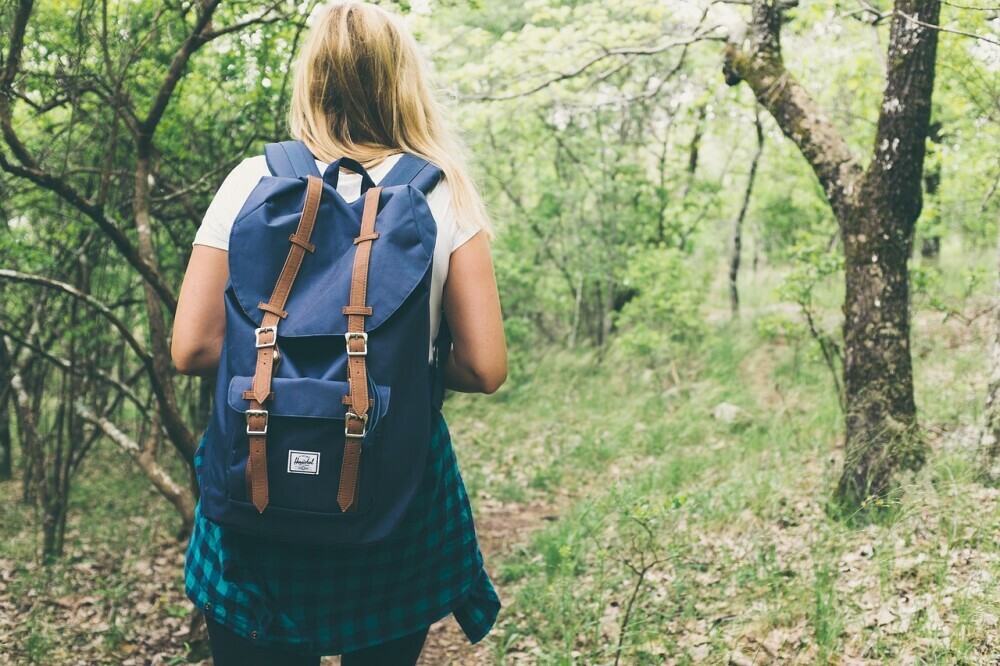
Understanding the Solo Female Travel Landscape
The rise in popularity of solo female travel
The allure of exploring the world solo has captivated more women than ever before. Uncover the reasons behind this surge in popularity and how it’s reshaping the travel landscape. The surge in solo female travel’s popularity stems from various factors.
Here are some reasons contributing to this trend:
Empowerment and Independence: More women are seeking the thrill of exploring alone, finding it empowering and a means of fostering independence. They see it as an opportunity to challenge themselves and build confidence.
Safety Awareness and Accessibility: With increased awareness about safety measures, advancements in technology, and accessible travel information, women feel more equipped and confident to navigate different destinations alone.
Community and Support Networks: Online communities, social media platforms, and travel blogs allow women to connect, share experiences, and gather valuable tips and advice from fellow female travellers, easing concerns and encouraging solo journeys.
Changing Cultural Norms: Society’s evolving attitudes toward gender roles and travel have shifted, encouraging women to embrace solo adventures without the societal pressures or stigmas previously attached to them.
Personal Growth and Self-Discovery: Solo travel often leads to profound personal growth and self-discovery. Women find that stepping out of their comfort zones and experiencing new cultures helps them learn more about themselves and the world around them.
Customized Experiences: Travelling solo allows women to tailor their experiences precisely to their interests and preferences without compromising or adhering to someone else’s itinerary.
This surge in solo female travel is reshaping the travel landscape by prompting the tourism industry to cater more specifically to the needs and preferences of female travellers. It encourages the development of female-focused accommodations, tours, and services tailored to ensure safety, comfort, and a sense of community for solo female explorers.

Addressing common safety concerns and misconceptions
Dive into the prevalent safety concerns that deter solo female travellers and debunk the misconceptions that often overshadow the joys of independent exploration.
Of course, safety is paramount, especially for female travellers. Addressing common concerns and misconceptions can be crucial.
Safety Concerns
Research Destination Safety: Before travelling, research the safety situation at the destination. Look into local customs, laws, and potential safety risks for women.
Blend In: Dressing modestly and adapting to local customs can help avoid unwanted attention. Take into account the cultural customs of the location you’re travelling to.
Stay Aware of Surroundings: Be vigilant in public spaces. Keep an eye on your surroundings, especially in unfamiliar areas or crowded places.
Trust Your Instincts: If a situation feels uncomfortable or unsafe, trust your intuition and remove yourself from it.
Share Plans: Keep someone informed about your itinerary and share updates regularly. This ensures someone knows your whereabouts.
Secure Accommodations: Choose reputable accommodations with good reviews and in safe neighbourhoods. Ensure doors and windows are secure.
Use Reliable Transportation: Opting for licensed taxis or trusted transportation services. Avoid travelling alone late at night whenever possible.
Stay in touch: Ensure your phone stays charged and store emergency contacts. Consider using safety apps or devices for added security.
Learn Basic Local Phrases: Knowing a few phrases in the local language can be immensely helpful in seeking assistance or conveying your needs.
Confidence and Assertiveness: Project confidence in your demeanour. In uncomfortable situations, assertively communicate your boundaries.
Misconceptions
Overemphasis on Danger
While safety is essential, overly focusing on potential risks might hinder your experience. Stay informed but don’t let fear restrict your travels.
Solo Travel is Unsafe
With proper planning and awareness, solo travel can be safe and immensely rewarding.
Certain Destinations Are Off-Limits
While some places may require extra precautions, they’re not necessarily off-limits. Research and preparation can make them viable options.
Ultimately, every destination has its unique safety considerations. Being informed, staying alert, and trusting your instincts are key to ensuring a safe and enjoyable travel experience.

Consideration of cultural norms and local customs
Understanding and respecting cultural norms is key when travelling. Learn how to navigate different customs and traditions respectfully while immersing yourself in new destinations.
Respecting cultural norms is fundamental when exploring new places. It’s essential to approach each destination with an open mind and a willingness to learn about the customs and traditions of the local people.
Here are a few tips on how to navigate cultural differences respectfully while immersing yourself in a new destination:
Research Before You Go: Take the time to learn about the culture, customs, and traditions of the place you’re visiting. Understand their social norms, religious practices, and any taboos to avoid inadvertently offending.
Observe and Adapt: Once you arrive, observe how locals behave and interact. Pay attention to their dress codes, greetings, dining etiquette, and social norms. Then, try to adapt your behaviour accordingly to show respect for their way of life.
Respect Religious Practices: Many destinations have religious practices that are an integral part of daily life. Whether it’s removing shoes before entering a temple or covering your head in a place of worship, show respect by following these practices.
Be Mindful of Language: Attempt to learn a few basic phrases in the local language. Even if it’s just “hello,” “thank you,” or “please,” locals often appreciate the effort, and it helps bridge cultural gaps.
Ask Permission for Photos: Not everyone enjoys being photographed. In some cultures, it’s respectful to ask for permission before taking someone’s picture or before photographing certain places.
Be Open-Minded: Keep an open mind and embrace the differences you encounter. It’s okay to feel a bit out of your comfort zone, but being respectful and curious about new customs can lead to enriching experiences.
Accept Cultural Differences: Remember that what might seem unusual or different to you is a way of life for others. Embrace diversity and differences without judgment.
Accept Feedback Gracefully: If you unintentionally offend someone or make a cultural mistake, apologize and seek to understand what you did wrong. Most people appreciate the effort to acknowledge and learn from mistakes.
By being mindful and respectful of cultural norms, you can not only avoid offending but also create more meaningful connections and experiences during your travels.
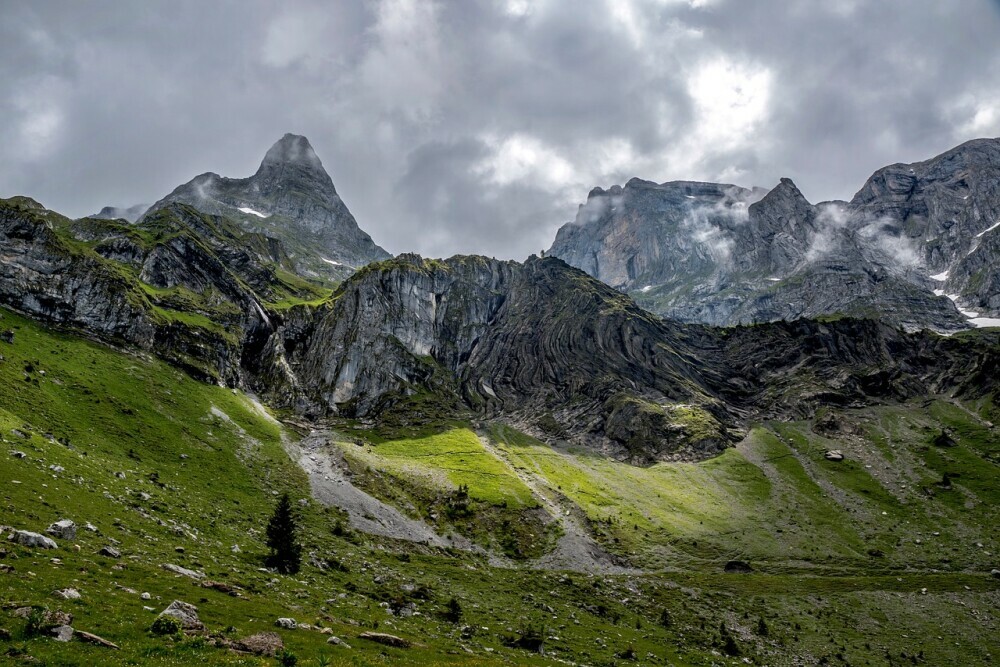
The importance of self-awareness and confidence on the road
Building self-awareness and confidence is essential. Discover how these traits serve as powerful tools for a fulfilling and safe solo travel experience.
Self-awareness and confidence are like trusty companions on the journey of solo travel. They act as guiding stars, illuminating the path and ensuring a fulfilling and safe adventure.
Self-awareness is the first step toward understanding oneself. When embarking on solo travel, knowing your strengths, weaknesses, and triggers can be invaluable. It helps in making informed decisions, especially in unfamiliar territories. Being aware of your comfort zone allows you to push boundaries sensibly and grow through new experiences.
Confidence is the fuel that propels you forward. It’s not about being fearless but rather about trusting your abilities to navigate unknown terrains. Confidence grows when you step out of your comfort zone, face challenges, and overcome them. It gives you the resilience to tackle unexpected situations that might arise during solo travel.
Together, self-awareness and confidence create a shield of self-reliance. They allow you to assess risks, make wise choices, and adapt to diverse environments. With a strong sense of self, you’re more open to interactions with new cultures and people, enhancing the richness of your travel experiences.
Moreover, self-awareness and confidence contribute significantly to personal safety. Being attuned to your surroundings and instincts helps in identifying potential risks. Confidence helps in asserting boundaries and making decisions that prioritize your well-being.
In essence, self-awareness and confidence are not just companions but indispensable tools for solo travel. They empower you to embrace the unknown, learn from the journey, and create a fulfilling and safe experience.
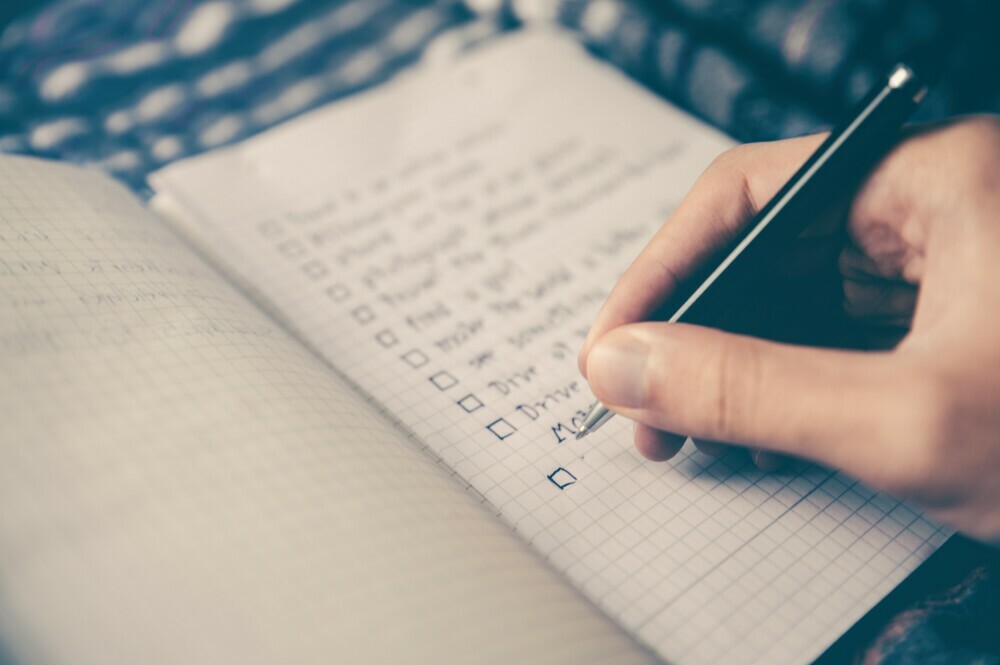
Pre-Travel Preparations: A Checklist for Safety and Comfort
Creating a comprehensive travel itinerary
Creating a comprehensive travel itinerary is key to a successful solo adventure.
Here’s a step-by-step guide to help you craft a detailed plan:
Step 1: Choose Your Destination
Research Destinations: Consider places that align with your interests, budget, and safety concerns.
Consider Logistics: Evaluate travel time, visa requirements, local customs, and potential language barriers.
Step 2: Set Your Travel Dates
Check Seasonality: Be mindful of weather conditions and peak tourist seasons.
Plan for Flexibility: Allow some wiggle room in case of unexpected delays or interesting detours.
Step 3: Accommodation and Transportation
Book Accommodation: Choose lodging options based on your preferences (hostels, hotels, Airbnb, etc.).
Arrange Transportation: Plan how you’ll get around, public transport, car rentals, or specific tours.
Step 4: Create a Daily Itinerary
Outline Daily Activities: List must-see sights, activities, and experiences for each day.
Prioritize and Schedule: Allocate time slots for each activity, allowing for breaks and exploration.
Include Alternatives: Have backup plans in case of closures or changes in your primary itinerary.

Step 5: Budget Planning
Estimate Expenses: Calculate costs for accommodation, transportation, meals, activities, and souvenirs.
Create a Budget: Set daily limits and allocate funds for emergencies or unforeseen expenses.
Step 6: Research Safety Precautions
Understand Local Laws: Familiarize yourself with local customs, laws, and emergency contacts.
Health Precautions: Check required vaccinations and healthcare availability at your destination.
Step 7: Pack Smartly
Make a Packing List: Consider weather, planned activities, and any specific items needed.
Travel Essentials: Ensure you have the necessary documents (passport, visas, insurance), medications, and emergency contacts.
Step 8: Stay Connected and Informed
Stay Informed: Research local news, cultural events, and any ongoing situations in the area.
Communicate Plans: Share your itinerary with a trusted friend or family member for safety purposes.
Access to Information: Save maps, emergency contacts, and important details offline on your phone.
Step 9: Enjoy the Journey
Stay Open-Minded: Embrace unexpected experiences and be flexible with your plans.
Interact with Locals: Engage with locals for recommendations and cultural insights.
Step 10: Review and Adjust
Regularly Assess Plans: Check if your itinerary aligns with your interests and make necessary adjustments.
Stay Safe: Prioritize safety throughout your journey and adapt plans accordingly.
While a detailed itinerary is helpful, leaving room for spontaneity and unforeseen adventures can add an extra charm to your solo travels.

Selecting accommodations wisely, safety features to look for
Choosing the right accommodations as a solo traveller is crucial. Uncover the safety features to prioritize when selecting places to stay during your travels.
Here are some safety features to consider when choosing a place to stay:
Location: Opting for accommodations in safe neighbourhoods or areas with good lighting, proximity to public transportation, and easy access to emergency services.
Secure Entry: Look for places with secure entry systems, such as key cards or codes, to prevent unauthorized access to the building or rooms.
24/7 Reception or Staff: Having staff available round the clock can be essential for emergencies or assistance at any time.
Well-lit Areas: Ensure that the surrounding areas, corridors, and entrances are well-lit to minimize risks, especially when returning at night.
Reviews and Ratings: Check online reviews from previous guests to gauge the safety and security of the place.
Safety Equipment: Ensure there are smoke detectors, fire extinguishers, and first aid kits available in the accommodation.
Secure Locks and Safes: Confirm that the room has sturdy locks and, ideally, a safe to store valuables.
CCTV or Security Cameras: While respecting privacy, the presence of cameras in common areas can be a security measure.
Emergency Information: Be aware of emergency exits, contact numbers for local authorities, and any specific safety information provided by the accommodation.
Local Knowledge: Upon arrival, inquire at the reception about any specific safety tips or precautions relevant to the area.
While these features are important, trusting your instincts and being vigilant are key. Sometimes, a personal assessment of the surroundings and interactions with staff can provide valuable insights into the safety of a place.
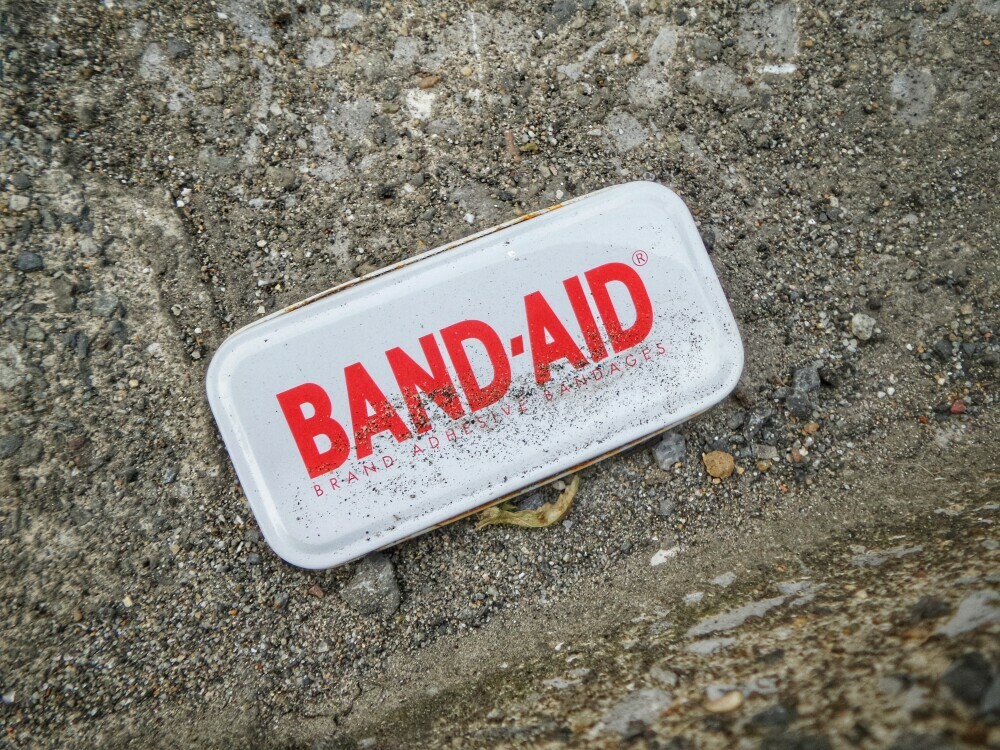
What to pack: essentials for health and security
Packing smartly ensures a smoother journey. Find out the essential items to pack for maintaining health and ensuring security as a solo traveller. Packing smartly can make a big difference for a solo traveller.
Here’s a rundown of essential items to consider for health and security:
Health Essentials
First Aid Kit: Include band-aids, antiseptic wipes, pain relievers, and any personal medications you might need.
Prescriptions and Medical Information: Carry copies of your prescriptions, health insurance information, and a list of emergency contacts.
Hand Sanitizer and Wipes: Keep these handy for regular sanitation, especially when water and soap are not readily available.
Reusable Water Bottle: Stay hydrated by having a refillable water bottle with you at all times.
Healthy Snacks: Pack some non-perishable snacks like nuts, granola bars, or dried fruits for when you’re on the go.
Sun Protection: Sunscreen, sunglasses, and a wide-brimmed hat to protect yourself from sun exposure.
Insect Repellent: Especially important if you’re travelling to areas with mosquito-borne diseases.
Travel Insurance Information: Have all necessary documents and contact numbers readily accessible.
Security Essentials
Money Belt or Hidden Pouch: Safely store your passport, extra cash, and important documents under your clothes.
Portable Door Lock or Doorstop: For added security in accommodations where locks might be unreliable.
Travel Locks: Use TSA-approved locks for your luggage and lockers to safeguard your belongings.
Emergency Whistle: A simple yet effective tool for attracting attention in case of danger or emergency.
Portable Charger or Solar Power Bank: Keep your devices charged to stay connected and have access to maps or emergency contacts.
Travel Adapter: Ensure you can charge your devices no matter where you are.
Local Emergency Numbers: Save emergency contact numbers in your phone or have them written down somewhere easily accessible.
Digital Copies of Documents: Keep digital copies of your passport, ID, travel insurance, and other important documents in secure cloud storage.
Being prepared is key. Tailor these essentials to your specific needs and destinations, and always stay aware of your surroundings for a safe and enjoyable trip.

Setting up communication strategies with loved ones
Staying connected is key to peace of mind. Learn effective communication strategies to keep loved ones informed about your whereabouts. Staying connected while travelling solo is crucial for both your peace of mind and for your loved ones.
Here are some effective communication strategies to keep them informed about your whereabouts:
Share Your Itinerary
Detailed Plans: Provide a comprehensive itinerary outlining your destinations, accommodations, and any planned activities.
Updates: Keep your loved ones informed about any changes to your schedule or unexpected detours.
Regular Check-ins
Establish a Schedule: Agree on a regular time to check in, whether it’s daily, every other day, or weekly.
Mode of Communication: Choose a reliable communication method (phone calls, messaging apps, email) and stick to it.
Emergency Contacts
Share Important Numbers: Give them access to your emergency contacts, including local authorities, your accommodations, and any relevant embassy or consulate.
Medical Information: Share details about any health conditions or medications you have in case of emergencies.
Online Updates
Social Media or Blog: Consider posting updates on social media or starting a blog to keep everyone informed about your experiences and locations.
Geotagging: Use geotags or location-sharing features on certain apps if you’re comfortable, so they can track your whereabouts easily.

Safety Precautions
Safety Protocol: Share your safety protocols, let them know when you arrive at a new destination, especially if it’s late at night.
Local Information: Inform them about any local customs or safety tips you’ve learned to ensure you’re well-prepared.
Communication Apps
Multiple Platforms: Use multiple communication apps or platforms as backups in case one fails.
Offline Messages: Keep some pre-written messages handy in case you encounter areas with poor connectivity.
Privacy and Security
Be Mindful of Sharing: Avoid sharing sensitive information like exact addresses or financial details over unsecured networks.
Password Protection: Keep your devices and accounts password-protected to safeguard your personal information.
Mutual Understanding
Open Dialogue: Discuss expectations regarding communication frequency and emergencies before your trip.
Respect Time Zones: Be mindful of time differences if you’re travelling across different zones.
With these strategies, you can maintain a strong line of communication with your loved ones while travelling solo, ensuring both your safety and their peace of mind.
Travel insurance: understanding your coverage needs
Understanding travel insurance is fundamental. Explore the nuances of coverage and how to pick the right plan that suits your solo travel needs.

Navigating New Destinations: Strategies and Tips
Learning the local language basics and communication tips
Mastering a few local phrases can open doors. Discover tips to navigate language barriers and communicate effectively in new environments. Learning some basic phrases in the local language can make a huge difference when you’re travelling solo.
Discover some guidance on overcoming language obstacles for better communication:
Learn Key Phrases
Greetings: Start with “hello,” “goodbye,” “please,” and “thank you.”
Basic Questions: Learn to ask for directions, order food, and inquire about prices.
Emergency Phrases: Know how to ask for help, say you’re not feeling well, or need assistance.
Use Language Apps
Offline Translation Apps: Apps like Google Translate allow you to download languages for offline use.
Language Learning Apps: Platforms like Duolingo or Get App can help you learn basic phrases and pronunciation.
Non-verbal Communication
Body Language: Use gestures and facial expressions to convey messages.
Visual Aids: Pointing at maps, and pictures, or using hand signals can help bridge the gap.
Cultural Sensitivity
Respect Local Customs: Understand cultural norms regarding greetings, personal space, and gestures.
Patience and Respect: Be patient and respectful when trying to communicate. Locals often appreciate your effort.

Practice, Practice, Practice
Interact with Locals: Engage in conversations with locals – they can help correct your pronunciation and teach you more.
Daily Use: Practice phrases daily, reinforcing your learning and improving your confidence.
Be Prepared
Write Down Important Phrases: Have a small notebook with key phrases written down for quick reference.
Learn Numbers and Prices: Knowing numbers helps during transactions.
Stay Calm and Positive
Stay Calm: Don’t panic if you can’t communicate perfectly. Stay composed and try different methods.
Stay Positive: A positive attitude often breaks the ice and encourages locals to help you.
Use Technology
Voice-to-Text Apps: Some apps convert spoken words into written text, aiding communication.
Smartphone Translation: Some smartphones have real-time translation features you can use during conversations.
Seek Help When Needed
Tourist Information Centres: Visit these centres for guidance or assistance.
Locals or Staff: Don’t hesitate to ask for help from hotel staff, shopkeepers, or other travellers.
Learn from Mistakes
Don’t Fear Mistakes: Embrace errors as part of the learning process.
Take Feedback: If corrected, take note and improve for next time.
Learning a few local phrases and being open to learning can significantly enhance your travel experience. Be patient, respectful, and open-minded in your interactions, and you’ll find that most people are willing to help and appreciate your effort to communicate in their language.
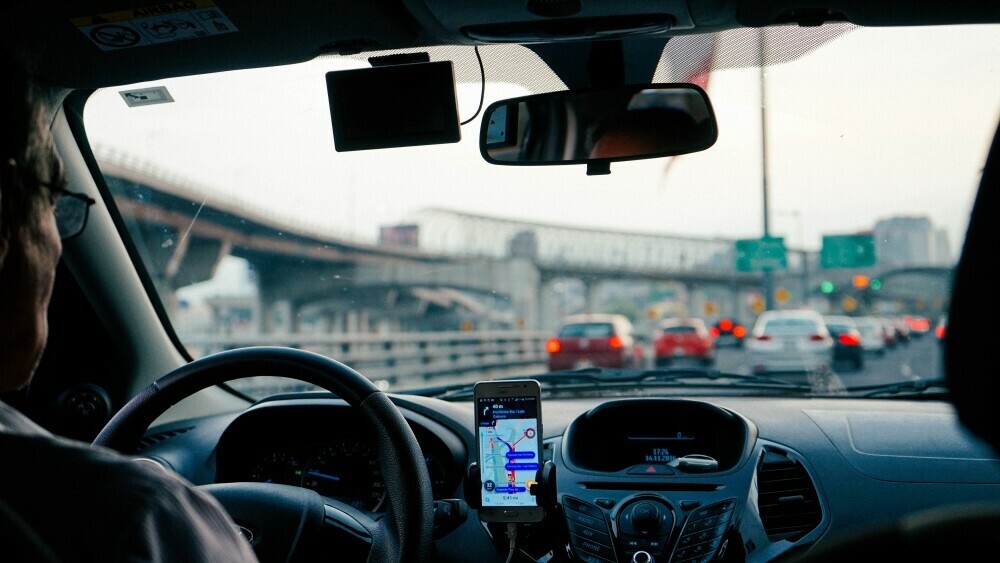
Transportation wisdom: staying safe on public and private transit
Navigating transportation in unfamiliar places requires vigilance. Gain insights into staying safe while using various modes of transport. Staying safe while using different modes of transportation, especially when travelling alone, is crucial.
Here are some tips for both public and private transit:
Public Transportation: Plan Ahead
Research the routes and schedules before your journey. Apps or websites for public transit can be incredibly helpful.
Stay Aware: Be alert to your surroundings. Avoid distractions like loud music or being engrossed in your phone.
Use Designated Stops: Always board and alight at designated stops or stations. Avoid isolated or poorly lit areas.
Secure Valuables: Keep your belongings close to you. Use zippers, buttons, or concealed pockets to safeguard your valuables.
Be Mindful of Others: Trust your instincts. If someone or something feels suspicious, move away or seek assistance from transit personnel.
Emergency Contacts: Keep emergency contacts handy. Inform a friend or family member about your travel itinerary.
Private Transportation (Taxis, Ride-Sharing): Verify the Vehicle
Check the make, model, and license plate of the vehicle before getting in. Compare it to the details provided in your app.
Share Trip Details: Share your ride details with a friend or family member. Apps often have features for this purpose.
Sit Smartly: If possible, sit behind the driver in taxis or ride-shares. This gives you better visibility and a quick exit if needed.
Avoid Personal Information: Don’t share personal information unless necessary. Stick to general conversation to maintain privacy.
Choose Trusted Services: Use well-known and reputable ride-sharing services. Check reviews and ratings before booking.

General Safety Tips: Stay Sober
If possible, avoid excessive alcohol consumption when using transportation alone. It can impair judgment.
Charge Your Phone: Ensure your phone is charged before leaving. Having a fully charged phone is crucial for emergencies.
Know Emergency Numbers: Familiarize yourself with local emergency numbers or have them saved in your contacts.
Trust Your Instincts: If something doesn’t feel right, don’t hesitate to leave or seek help immediately.
Keep Copies of Important Documents: Have copies of your ID, passport, or any essential documents in case of loss or theft.
By staying vigilant, planning, and trusting your instincts, you can enhance your safety while using various modes of transportation during solo travel.
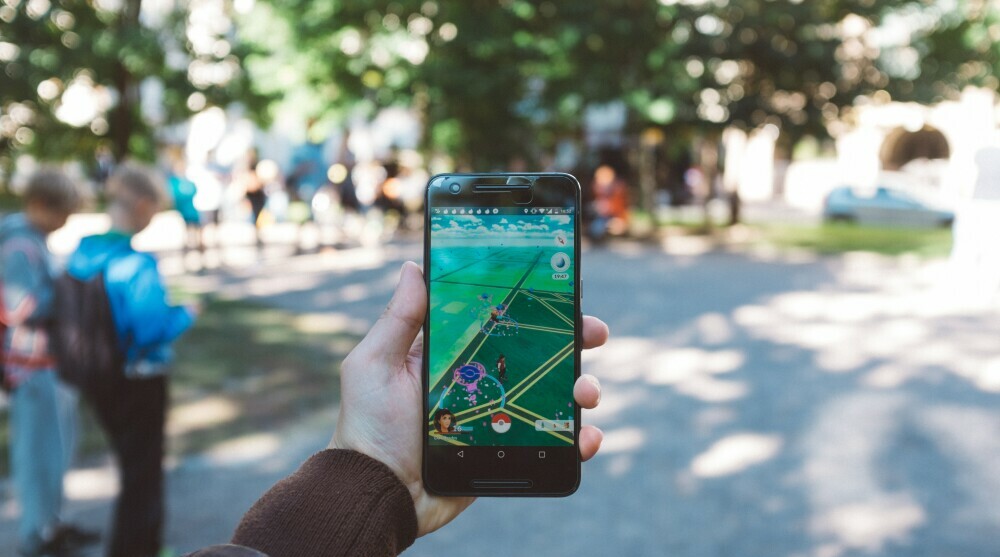
Digital navigation and when to trust technology
Technology aids travel but isn’t fool-proof. Learn when to rely on digital navigation and when to use traditional methods for safer travel. Digital navigation has revolutionized how we explore, offering convenience and accuracy. However, it’s crucial to blend modern tools with traditional methods for safer solo travel.
Reliable Aspects of Digital Navigation
Maps and GPS: These tools provide real-time directions, making navigation seamless. They are incredibly useful, especially in unfamiliar territories.
Online Resources: Websites and apps offer insights into local attractions, accommodations, and reviews, enhancing the travel experience.
Communication: Digital tools facilitate communication, allowing you to stay connected with loved ones or emergency services if needed.
When to Trust Digital Navigation
Familiarization: Trust digital navigation in well-mapped and populated areas where GPS signals are strong.
Real-time Updates: Use it for dynamic situations like traffic congestion or sudden changes in plans.
Supplementary Information: It’s excellent for providing additional context about a location or offering alternative routes.

Where Traditional Methods Shine
Paper Maps: Always have a physical map as a backup, especially in remote areas or places with poor connectivity.
Local Advice: Trust insights from locals or guidebooks; they often provide valuable information that might not be available online.
Navigation Skills: Developing basic navigation skills can be invaluable in case digital tools fail.
When to Rely on Traditional Methods
Remote Areas: In places with limited or no digital connectivity, rely more on traditional maps and local guidance.
Battery or Tech Issues: If your device runs out of battery or malfunctions, traditional methods become essential.
Cultural Experience: Embrace the culture by asking for directions; it can lead to meaningful interactions and a deeper understanding of the place.
Balancing Act for Safer Travel
Preparation: Prioritize both digital and traditional tools in your travel preparations.
Backup Plans: Always have a backup, whether it’s a physical map, a written itinerary, or emergency contacts.
Common Sense: Trust your instincts; if something feels off, seek assistance from locals or authorities.
Technology is an excellent aid, but it’s essential to use it judiciously and complement it with tried-and-tested methods for a safer and more enriching solo travel experience.

Finding trustworthy local guides and making new friendships
Local insights enrich travel experiences. Explore strategies for finding reliable guides and fostering meaningful connections with locals. Finding trustworthy local guides and making connections with locals can greatly enhance your solo travel experience.
Here are some strategies to help you achieve that:
Finding Trustworthy Local Guides
Online Platforms: Websites like TripAdvisor as mentioned below, Viator, or GetYourGuide offer reviews and ratings for local guides. Look for highly rated guides with positive reviews from travellers.
Local Tourism Offices: Visit local tourism offices upon arrival. They often recommend certified guides who are knowledgeable and trustworthy.
Ask Accommodation Staff: Hotel receptionists or Airbnb hosts can suggest reliable guides or tour companies they trust.
Social Media Groups/Forums: Join travel groups on platforms like Facebook or Reddit. Seek recommendations from fellow travellers who have visited the same destination.
Local Tours or Activities: Joining group tours or activities led by local guides allows you to assess their expertise and rapport with travellers before hiring them for a more personalized experience.

Fostering Meaningful Connections with Locals
Learn the Basics of the Local Language: Even if it’s just a few phrases, locals appreciate the effort and it can break the ice for meaningful conversations.
Participate in Local Events or Workshops: Attend festivals, workshops, or community events to engage with locals in their element.
Dine at Local Eateries: Eating at local restaurants or street stalls can lead to spontaneous conversations and interactions with locals.
Stay in Homestays or Guesthouses: Opting for accommodations that facilitate interactions with local hosts or other travellers, providing opportunities to bond.
Be Respectful and Open-Minded: Respect local customs and traditions. Showing genuine curiosity about their culture can encourage locals to open up and share their experiences.
Building Friendships
Be Approachable and Friendly: Smile, be open to conversations, and initiate interactions whenever possible.
Stay in One Place for a While: Spending more time in a particular area allows you to build deeper connections and friendships.
Offer Help or Volunteer: Engaging in community activities or offering help can create lasting connections and friendships.
Exchange Contact Information: If you’ve connected with someone, exchanging contact details can pave the way for maintaining the friendship beyond your trip. Just be careful.
Follow-up: After your trip, stay in touch through social media or emails. Share your experiences and express gratitude for their hospitality.
Building relationships takes time and effort. Approach interactions with genuine curiosity and respect, and you’ll likely create memorable connections with locals during your travels.

Empowerment Through Travel: Building a Supportive Community
Connecting with other solo female travellers
Community support is invaluable. Discover avenues to connect with fellow solo female travellers for shared experiences and advice. Connecting with other solo female travellers can be both enriching and reassuring.
Here are some avenues to consider for connecting with like-minded individuals:
Online Forums and Communities: Platforms like Reddit (check out r/solo-travel or r/travel), Lonely Planet’s Thorn Tree forum, or TripAdvisor’s Solo Travel forums often have sections dedicated to solo female travellers. You can ask questions, share experiences, and connect with others here.
Social Media Groups: Facebook groups focused on solo female travel are abundant. Search for terms like “Solo Female Travelers,” and “Women Who Travel,” or specify your interests (e.g., adventure travel, budget travel) to find groups aligned with your preferences.
Travel Blogs and Websites: Many travel bloggers, especially female travellers, offer forums or comment sections where readers can engage and share experiences. Following these blogs and participating in discussions can lead to connections with other solo female travellers.
Meetup Groups: Meetup.com might have local or virtual meetups for solo travellers or women travellers. These gatherings offer an excellent opportunity to meet others in person or virtually and plan future trips together.
Travel Apps: Some apps are specifically designed for connecting travellers. Apps like Travello or Tourlina cater to solo travellers looking to connect with others for activities or shared trips.
Women’s Travel Festivals/Conferences: Keep an eye out for events like the Women’s Travel Fest, Women in Travel Summit (WITS), or other similar gatherings. These events often provide an excellent platform for networking and meeting fellow female travellers.
Instagram and Twitter: Follow hashtags like #solofemaletravel or #womentravelers on Instagram and Twitter. Engage with posts, share your experiences, and connect with others who share similar interests.
Remember, while connecting with others, especially online, it’s essential to prioritize safety and verify the credibility of the individuals or groups you interact with. Use trusted platforms, exercise caution when sharing personal information, and follow your instincts when engaging with new connections.
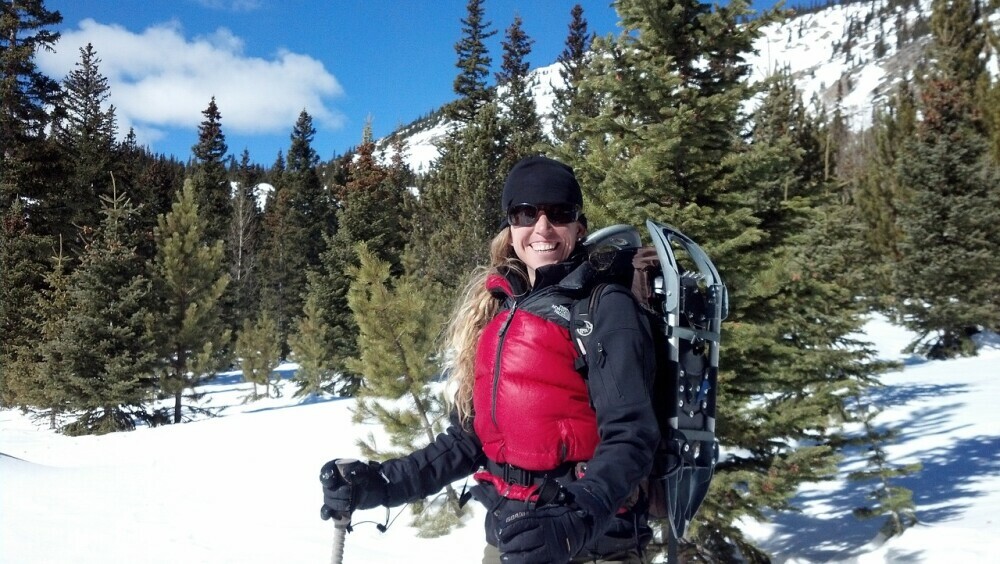
Embark on Your Journey!
Embarking on a solo journey as a female traveller is a transformative adventure. Armed with an understanding of the travel landscape, meticulous preparations, strategic navigation tips, and a supportive community, every woman can embark on a safe, empowering, and enriching solo travel experience.
FAQs (Frequently Asked Questions)
Is solo female travel safe?
Absolutely! While safety concerns exist, with proper planning, awareness, and precautions, solo female travel can be incredibly safe and empowering. This guide offers tips to mitigate risks and ensure a secure journey.
How can I meet other solo female travellers on the road?
Engage with online communities, join travel groups or forums, attend local meetups, or stay at hostels known for solo travellers, these avenues offer opportunities to connect with like-minded individuals.
What should I do in case of an emergency while travelling alone?
Always have emergency contacts handy and be familiar with local emergency services. Share your itinerary with someone trustworthy and consider travel insurance for added assistance during unforeseen situations.
How do I ensure cultural respect while travelling alone?
Research and understand the local customs and norms of the destinations you plan to visit. Being respectful, observant, and adaptable goes a long way in showing cultural appreciation.
How can I stay connected with loved ones while travelling solo?
Set up regular check-ins with family or friends via messaging apps or video calls. Share your itinerary and any changes in plans to keep them updated about your whereabouts.

Conclusion
Solo female travel is an empowering adventure, filled with opportunities for growth and self-discovery. By understanding the landscape, preparing meticulously, navigating wisely, and fostering a supportive community, every solo female traveller can embark on a safe, fulfilling, and transformative journey.


